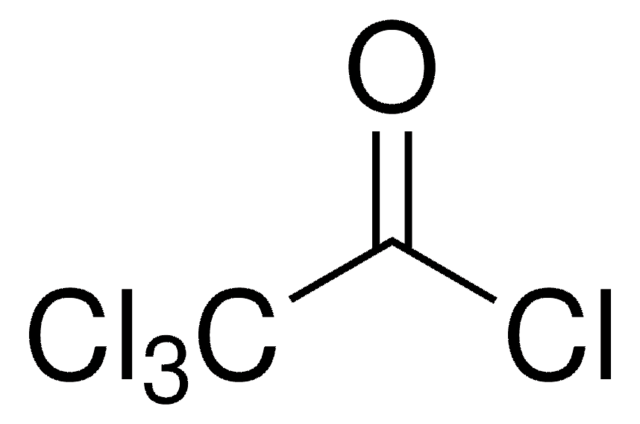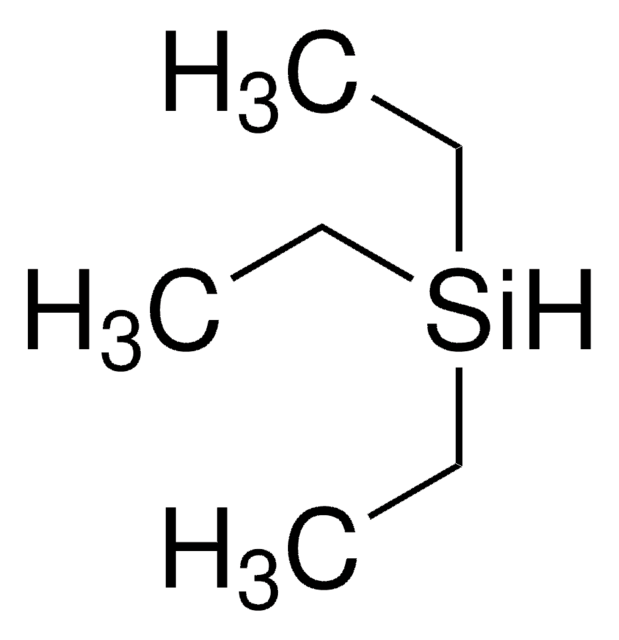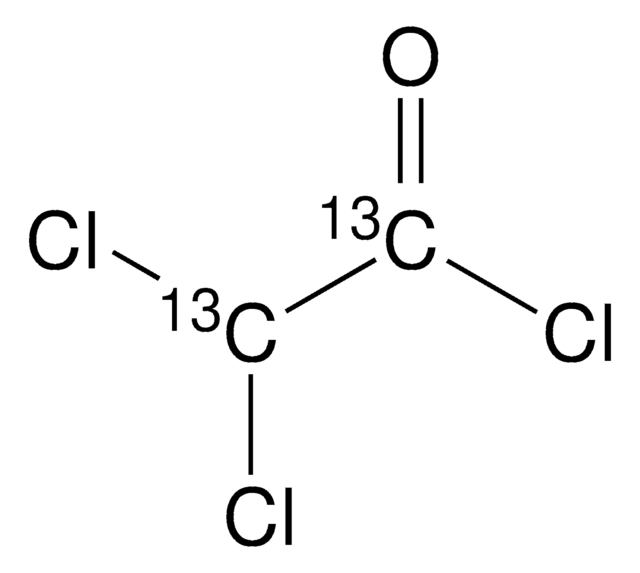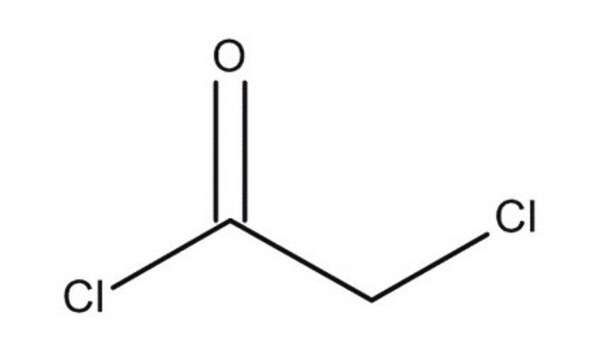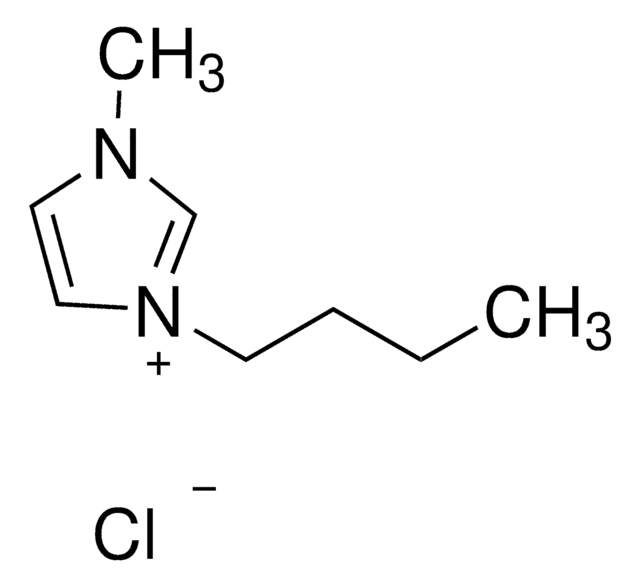推荐产品
品質等級
化驗
98%
形狀
liquid
折射率
n20/D 1.46 (lit.)
bp
107-108 °C (lit.)
密度
1.532 g/mL at 25 °C (lit.)
SMILES 字串
ClC(Cl)C(Cl)=O
InChI
1S/C2HCl3O/c3-1(4)2(5)6/h1H
InChI 密鑰
FBCCMZVIWNDFMO-UHFFFAOYSA-N
正在寻找类似产品? 访问 产品对比指南
訊號詞
Danger
危險聲明
危險分類
Aquatic Acute 1 - Carc. 1B - Eye Dam. 1 - Skin Corr. 1A
安全危害
儲存類別代碼
6.1C - Combustible acute toxic Cat.3 / toxic compounds or compounds which causing chronic effects
水污染物質分類(WGK)
WGK 2
個人防護裝備
Faceshields, Gloves, Goggles, type ABEK (EN14387) respirator filter
其他客户在看
M F Khan et al.
Immunopharmacology and immunotoxicology, 19(2), 265-277 (1997-05-01)
Welders are exposed to dichloroacetyl chloride (DCAC) when trichloroethene (TCE) is used as a degreasing agent. Human exposure to TCE and tetrachloroethane can also lead to formation of DCAC in situ through metabolism. Due to its strong acylating property, it
Hsin-Hung Ou et al.
Journal of hazardous materials, 146(1-2), 302-308 (2007-01-24)
Batch photocatalytic degradation of 80+/-2.5 ppm V trichloroethylene (TCE) was conducted to investigate the effect of the oxygen and relative humidity (RH) on the formation of the dichloroacetyl chloride (DCAC) and phosgene. Based on the simultaneous ordinary differential equations (ODEs)
Rolf König et al.
Chemical research in toxicology, 21(3), 572-582 (2008-02-26)
Dichloroacetyl chloride (DCAC) is a reactive metabolite of trichloroethene (TCE). TCE and its metabolites have been implicated in the induction of organ-specific and systemic autoimmunity, in the acceleration of autoimmune responses, and in the development of liver toxicity and hepatocellular
M F Khan et al.
Toxicology and applied pharmacology, 170(2), 88-92 (2001-02-13)
Trichloroethene (TCE) and one of its metabolites dichloroacetyl chloride (DCAC) are known to induce/accelerate autoimmune (AI) response in MRL+/+ mice as evident from anti-nuclear, anti-ssDNA, anti-cardiolipin, and DCAC-specific antibodies in the serum (Khan et al., Toxicol. Appl. Pharmacol. 134, 155-160
A R Sellakumar et al.
Journal of the National Cancer Institute, 79(2), 285-289 (1987-08-01)
A series of earlier studies showed that inhalation exposures of rats to three water-reactive electrophilic compounds produced brisk yields of nasal cancer even when the animals were exposed for only 30 days (6 hr/day X 5 day/wk). In addition, carcinogenic
我们的科学家团队拥有各种研究领域经验,包括生命科学、材料科学、化学合成、色谱、分析及许多其他领域.
联系客户支持
